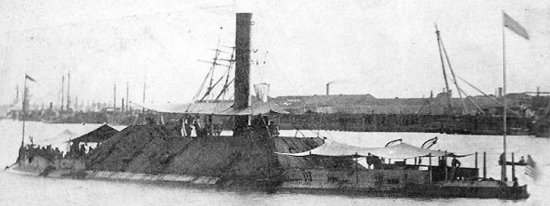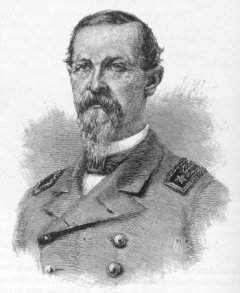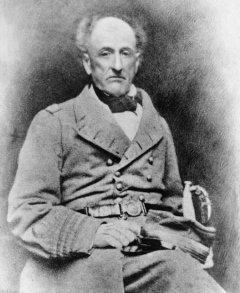
C.S.S. Tennessee, Ironclad!
(Also called Tennessee II or No 2, this was to distinguish it from the Arkansas-class
Tennessee)


The designing and building
The Tennessee was
built as an ironclad ram. Designed by J.L. Porter she was a modified version of
'Columbia' class ironclad.
Authorized in September 1862 the hull was constructed by
Henry D. Bassett on the Alabama River, a
short distance from the city of Selma, with the timber for the build cut in the
immediate area. She was launched the following 16 February,
1863, with Lieutenant James D. Johnston, C.S.N., commanded of oversee the final
construction. (During 1863 five
warships were under construction there at the Naval Ordnance Works.)
The casemate for the protection of her
battery was 78' 8 long and rose 8' above the deck. This shield was built
of yellow pine and white oak, 23" thick, and built at all 33 degrees with
the deck.
The massive wooden
hull was towed by two steamers to Mobile to have her engine fitted and to be armed.
(These engines were woefully inadequate
and their complicated gearing presented still further problems.
The armor plating was made
at the
rolling-mills of Atlanta, and arrived quickly. It consisted of plates of
exceedingly tough and malleable iron 7" wide, 2" thick,
and 21' long. Three layers of these plates were bolted on the forward
end of the shield as far as the after end of the pilothouse, and from their to the
termination of the shield two plates of 2" and one of 1" were used,
with only 2" on the deck. Heavy iron shutters were fixed over the
gun-ports, which were meant to close automatically when the gun was run back in,
but were liable to jamming if struck by shot.
During
her construction she was hampered by shortages of material
and manpower, Admiral Franklin Buchanan had to conscript civilians at
Mobile in order to complete her fitting out. A serious design fault had
the rudder chains left exposed, covered with boiler iron but
still very vulnerable. But about the 1 April 1864 the vessel
was ready to receive her crew, although she had no living
accommodations. Johnston was placed in command and immediately promoted to
Commander.
Statistics
Displacement 1273 tons
Dimensions length
209’ (66.1m)
beam
48’ (14.6m)
draft
14’ (4.3m)
Engines
Two geared non-condensing engines with 24” cylinders and a 7’ stroke
driven by four boilers.
They were originally
thought to have come from the steamer 'Alonzo Child' but recent
research makes this appear unlikely.
Armament 2 x 7 inch Brooke rifles on pivots
4 x
6.4” inch rifles
(Federal service saw 1 x 12
pdr added)
Crew 133
Speed
6-7 knots
To Mobile Bay
Once
completed the task of moving the Tennessee down to the join the small
fleet in the lower bay had to be faced. This entailed getting the deep draft vessel over the Dog River
bar, at the mouth of
the Mobile River, only 9 feet deep at
high tide To remove the guns and other ballast
to lighten the vessel would decrease the draft by only 4 inches.
The Tennessee
now drawing less than 9' of water was towed over the bar and into the lower bay on the night of May 17.
This was accomplished by two steamers,
one of which carried her coal, and the other her ammunition. Once
over the bar the crew were
employed during the passage to the bay in transferring these supplies.
The Tennessee
was one of the
best armed and armored ironclads that the Confederacy was able to build and Buchanan
had planned to put her to good use by running through the blockade that same night and capture
Fort Pickens at the entrance of Pensacola Bay. By the time
of their arrival and the pontoons had been set adrift it was now nearly
midnight due to this the tide
had fallen so much that she had the misfortune
to run
aground. Her presence in the bay was revealed by
daylight and when the tide rose sufficiently to float the
ship the plan was abandoned she
was moved down to an anchorage near Fort Morgan.
Here she remained nearly
three months, engaged in exercising the crew at their guns. While
here Johnston addressed, in a letter to the Admiral, certain necessary
alterations to the steering chains. A naval
constructor came down from the city to make plans to accomplish this but time
ran out.
The Battle
Mobile was a major port used by blockade
runners, this importance was not lost on its defenders. When New
Orleans fell, the Confederates expected Mobile to be next, feverish efforts were made to strengthen its defenses. As no
Federal troops
were available there was time to build up the city's strength.
With
the fall of New Orleans Rear
Admiral Franklin Buchanan was ordered to assume command of the naval
defenses He began by strengthen, with obstruction in the shape of
piling between the two forts, Gaines and Morgan, which guarded the entrance.
Torpedoes (mines) were planted in the deeper water, leaving just a narrow channel 500 yards wide
so that blockade runners could slip in.
On the evening of the 4
August it could be seen that the blockading fleet, which had recently been
reinforced by the arrival of the heavier wooden vessels and the monitors was
making preparations to force the passage into the bay so the Confederate
defenders did likewise.
The Federal
navy blockaded the port
during the early war years, but finally, at 0530 on the 5 August 1864, Flag
Officer David G. Farrugut attacked with 4 monitor type
ironclads and 14 wooden warships.
Tennessee, including the wooden gunboats
C.S.S. Gaines, Morgan, and Selma
who were now stationed at the approaches to Mobile Bay,
ninety miles south of the port. All hands were immediately called on board the
vessels, the anchor was raised and the men assembled
at their quarters for action. The distance from the bar to the entrance of
the bay is only about three miles and the Federal vessels were already taking
fire from the guns of Fort Morgan when the fleet started moving.
As the USS Tecumseh reached the center
of the channel between the forts, the Tennessee aimed for her
but the speed of both vessels was so slow that the sloops advanced beyond them
(the Tecumseh was to strike a torpedo (mine)) so the Tennessee now aimed
for the leading ship, the Hartford, hoping to ram her but was
easily evaded due to her opponents superior speed. But they proceeded to
follow it.
Now abandoning the pursuit of the Hartford
she turned to aid the gunboats who had put up a brave fight but Selma had surrendered, Gaines run aground,
that night she was set on fire by her crew and sank, and Morgan
had escaped to hide under the forts guns.
After engaging the Federal sloops the Tennessee then retired under the
forts guns.
The
Federal fleet now steamed four miles into Mobile bay and
anchored, then hands were piped to breakfast. At 0850 Buchanan ordered the
Tennessee to attack, so leaving the cover of the forts guns the ship turned
towards the enemy fleet 'consisting now of ten wooden vessels and the three
monitors.' The Tennessee
came within range at 0920 and the uneven fight started.
In the fight she was rammed
first by the Monongahela, Lackawanna (twice), and Hartford
and had her smoke stack shot away, several gun-port
shutters jammed, and finally the rudder chains were shot away, as well as the relieving
tackles.
With his flagship
unable to move, steer or fire her guns, and with the collapse of the casemate
seemingly imminent, Buchanan who was wounded in the battle, authorized her
surrender. With the flagpole shot away in the battle Johnston poked a white flag
up from the top of the casemate and surrendered
It was now that the wooden ships retired and the monitors
moved in and the worst
damage was inflicted at close range by the 15" guns of the monitor Manhattan
and 11" guns of Chickasaw with this she finally surrendered.
(An officer on the
Tennessee described
meeting with the 15" Rodman's on the Manhatton 'A hideous monster
came creeping up on our port side, whose slowly revolving turret whose turret
reveled the cavernous depths of a mammoth gun.....a thunderous report shook us
all, while a dense, sulfurous smoke covered our porthole and 440 pounds of
iron admitted daylight through our side where, before it struck, there had
been over 2" of solid wood covered by 5" of solid iron.')
At 1000 the firing stopped.
The Chickasaw towed the Tennessee and brought her to anchor near
the Hartford. Buchanan surrendered his sword to Lieutenant Giraud,
of the Ossippe, who was sent to take charge of the captured ship.
The Tennessee's loss of two killed and 20 wounded, including Buchanan, brought
the total for the four ships to 32, with 243 captured sailors. The Federal
fleet had lost 342, which included the greater part of the 114 crew on the sunk Tecumseh.
The end
The former Confederate ironclad was immediately taken into the Federal Navy as USS
Tennessee. Once her combat damage was quickly repaired, costing $7,258, she
was commissioned into
the U.S. Navy, 19 Aug
1864, and immediately employed
during operations to capture Fort Morgan, 19-22 August.
In the autumn of 1864
she was sent to New Orleans, Louisiana, for further repairs. Subsequently transferred to the US Navy's Mississippi Squadron until after the
end of the Civil War.
Decommissioned 19 August 1865, the ironclad was
sold at public action, 27 November 1867, in New Orleans for scrap
to J.F. Armstrong for $7,100, and then
broken up.


Commander James D.
Johnston
Admiral Franklin Buchanan
![]()